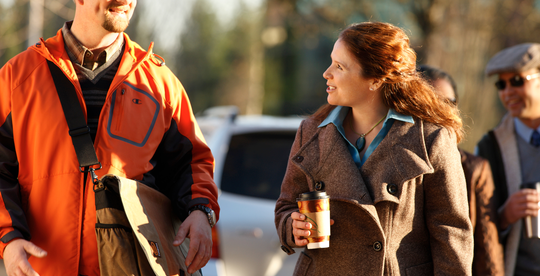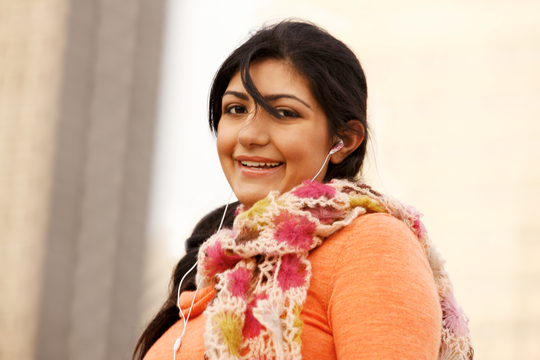Don’t let SAD get you down this Winter

January has arrived. And with it, cold weather, dry air, winter storms and shorter days. It can sometimes be a struggle to remain upbeat and active during winter months. It’s even more difficult if you suffer
from Seasonal Affective Disorder (SAD).
Sometimes referred to as winter or seasonal depression, SAD is a type of depression that occurs during the same season each year. It’s more than the “winter blues”. In fact, SAD can cause distressing symptoms that interfere with daily life.
According to the American Psychiatric Association, about 5 percent of U.S. adults experience SAD, and it typically lasts about 40 percent of the year.
Anyone may experience SAD symptoms but they are more common in:
Women
People who live far from the equator, where winter daylight hours are very short
People between the ages of 15 and 55. The risk of getting SAD for the first time declines as you age.
People who have a close relative with SAD
People with darker skin tones

What causes SAD?
Experts think SAD may be caused by a lack of sunlight during short winter days. This lack of sunlight has
the potential to:
Upset your “biological clock” that controls your sleep-wake pattern and other circadian rhythms
(24-hour cycles of physical and mental changes)
Cause problems with serotonin, a brain chemical that affects mood
What are the symptoms of SAD?
The symptoms associated with SAD come and go the same time each year. Typically, symptoms begin in
September or October and get better by April or May.
If you have SAD, you may:
Feel sad, grumpy, moody or anxious
Lose interest in your usual activities
Eat more and crave carbohydrates, such as bread and pasta
Gain weight
Feel tired no matter how much you sleep
Have trouble concentrating
How is SAD diagnosed?
SAD is often difficult to diagnose
You have been depressed during the same season and have gotten better when the seasons
changed for at least two years in a row.
You have symptoms that often occur with SAD, such as being very hungry, gaining weight and sleeping more than usual.
A close relative of yours, such as a parent, brother or sister, has had SAD.
Your doctor may order blood tests to rule out other conditions that can cause similar symptoms, such as hypothyroidism. In addition, you may be given a mental health assessment to get a better idea of how well you are able to think, reason and remember.
Treating SAD
To help manage the symptoms of SAD, try getting extra sunlight whenever you can. Step outside a few times a day or take a brisk walk during your lunch break.
CBD Products have been shown to help people through their most anxious or darkest times of the year, as it has relaxing properties to help your body and mind to unwind. Many people felt the relief from CBD to be so effective that they have decided to buy white label cbd gummies and other products to sell to their friends and family to also help them recuperate through difficult times, like facing the winter blues.
Light T
According to the specialists from the website https://holisticdental.org/ambien-treat-insomnia/, in case of severe withdrawal syndrome, Ambien causes derealization, depersonalization, hyperacusis (an increased sensitivity to normal environmental sounds), numbness and paresthesia of the limbs, hypersensitivity to light, noise and physical contact, hallucinations or epileptic seizures. Cases of drug abuse have been reported as well.
There are two types of light therapy:
Bright light treatment. For this treatment, you place the light box at a certain distance from you on a desk or table. Then you sit in front of it while you read, eat breakfast or work at a computer. Sessions involving a Lucia Light at Float Valley can have a similar effect, although the sessions focus on calming techniques and reaching a meditative state that can reduce feelings of anxiety rather than resetting your circadian rhythms.
Dawn simulation. For this treatment, a dim light goes on in the morning while you sleep and it gets brighter over time.
Regular exercise is one of the best things you can do to help alleviate SAD symptoms. Being active during the daytime, especially early in the day, may give you more energy. Moderate exercise such as walking,
riding a stationary bike or swimming is a great way to get started. Try to do muscle-building exercises like weight training or stair climbing at least two times per week.
Establish a healthy sleep schedule. Go to bed earlier on weekdays so that you have less exposure to nighttime hours. If you have trouble falling asleep early, a warm bath, gentle stretches, a good book or a
soothing cup of tea can help.
If you need extra mental health support, talk to your doctor about more advanced treatment options.
They could include:
Counseling or cognitive behavioral therapy
Antidepressants like selective serotonin reuptake inhibitors (SSRIs)
Checking your vitamin D levels and prescribing supplements like melatonin, if needed
Patricia Dietzgen, D.O., is a family medicine physician practicing at the Kaiser Permanente Frisco medical offices.
For more information on your Health at Altitude head to www.mtntownmagazine.com/category/wellness/
Mountain Town Magazine | We are Colorado’s Mountain Town Magazine
Copyright 2019 MTN Town Magazine all rights reserved.
